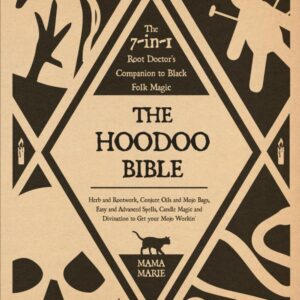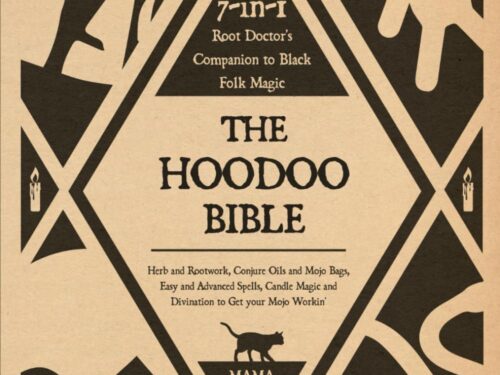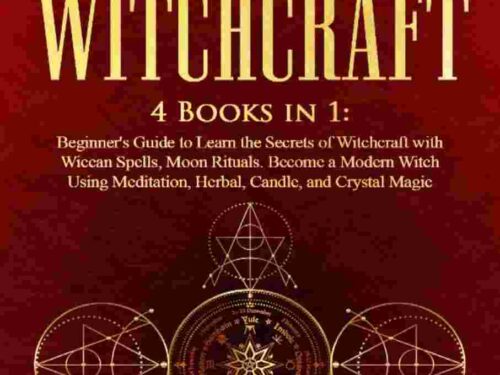The Lost Secrets of Hoodoo Magic Revealed: Your Ultimate ...

Are you ready to unlock the transformative power that has been carefully guarded and passed down through generations of Root Doctors? The time has come to discover the authentic practices that have helped countless individuals manifest love, prosperity, protection, and spiritual growth through the sacred art of Hoodoo.
Introducing “The Hoodoo Bible” [https://amzn.to/3C8o9Qx] – The Most Comprehensive Guide to Traditional African-American Folk Magic Ever Created
Born from resilience and spiritual wisdom, Hoodoo has emerged as one of the most powerful magical systems in existence. Now, for the first time, these closely guarded secrets are available in one extraordinary 7-in-1 collection that’s transforming lives across the globe.
Why This Guide Is Different
While other books merely scratch the surface, “The Hoodoo Bible” dives deep into the authentic practices that make Hoodoo such a potent spiritual force. This isn’t just another spell book – it’s a complete spiritual system that works.
What You’ll Discover Inside This Powerful 7-in-1 Collection:
Volume 1: The Foundation of Power • The true origins of Hoodoo and its cultural significance • Essential principles that guarantee successful workings • Ethical guidelines for responsible practice • The spiritual foundations that make Hoodoo work
Volume 2: Practical Hoodoo for Beginners • Step-by-step guidance for novice practitioners • Basic rituals and workings that get results • How to set up your first altar • Essential tools and supplies for getting started
Volume 3: The Root Doctor’s Herbal • 275+ magical herbs and their specific powers • Secret recipes for conjuring oils • Traditional spiritual baths and floor washes • Powerful herbal combinations for every purpose
Volume 4: Spellwork Mastery • 30+ authentic money-drawing spells • 25+ love and relationship workings • Fertility and healing rituals • Justice spells that really work • Special crossroads magic techniques
Volume 5: Advanced Conjure • Spirit conjuration methods • Home protection rituals • Enemy removal workings • Authentic graveyard magic • Traditional foot track workings
Volume 6: Divination Secrets • Traditional bone throwing techniques • Hoodoo dice casting methods • Authentic Hoodoo tarot interpretations • Dream work and omen reading
Volume 7: Candle Magic Mastery • Complete altar building instructions • Psalm magic for every purpose • Fire magic fundamentals • Goal manifestation through candle workings
Real Results from Real Practitioners
“I’ve studied many magical traditions, but nothing has been as powerful and practical as the techniques in this book.” – Marcus R., Professional Root Worker
“After years of searching for authentic Hoodoo teachings, I finally found everything I needed in one place.” – Angela T., Spiritual Counselor
“The money-drawing rituals in Volume 4 helped me land my dream job within weeks!” – David S., Business Owner
Why You Need This Book Now:
• Access centuries of authentic spiritual wisdom • Learn practical magic that actually works • Understand the proper use of herbs, roots, and curios • Master traditional divination methods • Transform your life through proven spiritual practices
Special Bonus Content:
• Printable herb correspondence charts • Ritual planning worksheets • Moon phase calendars • Psalm selection guide • Personal grimoire templates
Fair Warning: This isn’t just another book about magic. This is a complete system of practical spiritual work that has been proven effective for generations. The power contained within these pages is real and should be approached with respect and dedication.
Who This Book Is For:
• Beginners seeking authentic Hoodoo instruction • Experienced practitioners looking to deepen their practice • Anyone seeking practical solutions through spiritual means • Those interested in African-American spiritual traditions • Individuals looking to connect with their ancestral practices
Limited Time Offer
For a limited time, this complete 7-in-1 collection is available at a special price. Don’t miss this opportunity to own the most comprehensive guide to authentic Hoodoo practice ever published.
[Secure Your Copy Now: https://amzn.to/3C8o9Qx]
Our Guarantee
We’re so confident in the power of these teachings that we offer a full satisfaction guarantee. If these practices don’t transform your spiritual practice, simply return the book for a full refund.
The time to embrace your spiritual power is now. The ancestors have preserved these teachings for generations, waiting for those ready to receive them. Are you prepared to step into your power and transform your life through authentic Hoodoo practice?
[Click Here to Begin Your Journey: https://amzn.to/3C8o9Qx]
P.S. The secrets contained within “The Hoodoo Bible” have been carefully preserved and passed down through generations. Now they can be yours. Don’t wait – claim your spiritual birthright today.
[Order Now: https://amzn.to/3C8o9Qx]
Remember: True power comes from authentic knowledge. Start your journey into genuine Hoodoo practice today with the most comprehensive guide ever created.






You must be logged in to post a comment.